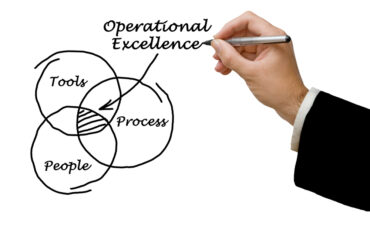
Analytics and ML performance and speed to results can be vastly improved when using a hybrid cloud that incorporates a modern database.
Businesses today are making analytics and machine learning a central part of their operations to help with everything, including improving efficiencies, hyper-personalizing customer services, and more. The dynamic nature of the workloads leads many businesses to move to hybrid cloud.
Hybrid cloud offers great scalability, cost savings, and the ability to move workloads to platforms that are optimized for the compute, storage, and data management needs of analytics and ML-intensive operations. In particular, performance and speed to results can be vastly improved when using a modern database that offers capabilities, tools, and support that are more advanced than many on-premises technologies.
That is an area where working with a company like Vertica, a Micro Focus line of business, comes into play. The Vertica SQL database and in-database machine learning solutions support the entire predictive analytics process with massively parallel processing and a familiar SQL interface.
Enabling a hybrid approach to analytics and ML
Vertica allows wide-scale use of analytics and ML throughout a business. That, in turn, helps deliver significant economic value to a business. Unfortunately, many companies need help with their particular move to hybrid.
Addressing geographically incurred latency
Another issue is how to make use of data and databases that already exists but may not be geographically close to cloud resources. The issue here is that when moving workloads to the cloud, latency due to geographic separation may be a problem. In particular, latency becomes especially important when analytics and ML routines are run on highly-optimized platforms such as Vertica’s.
To address this issue, the Vertica platform leverages technology from Vcinity. Vcinity uses patented technology to enable the Vertica platform to process geographically dispersed data across hybrid cloud environments as if Vertica and its data are co-located. It delivers LAN-like performance regardless of distance/latency and enables applications to access data, where and when it is created.
Use case examples show what’s possible
Vertica’s unified analytics platform and combined with other offerings and capabilities delivered via partnerships have use in a broad range of applications. In all cases, the business reaps significant benefits. Some examples include:
B2C marketing: Netcore is a global Martech product company that helps B2C brands create digital customer experiences with a range of products that help in acquisition, engagement, and retention. Netcore’s clients use its solutions to plan, execute, and monitor marketing campaigns across different channels such as Email, SMS, App, WhatsApp, and so on. Given limited budgets, the key ROI challenge for clients is to target the right customers, at the right time, on the right channels, and with the right message to maximize response rates and conversions.
To assist its clients, Netcore created Raman—an AI platform that analyzes huge datasets of historical and recent customer behavior to deliver smarter customer segmentation, improved targeting, and sophisticated predictive modeling.
As clients rapidly adopted Raman, Netcore was able to maintain the analytics performance customers expected and required using Vertica’s analytics platform’s capabilities. In particular, the company’s database was able to handle write- and read-intensive workloads in parallel without any lag or drop-in efficiency. In contrast, its existing implementations of MySQL and MongoDB were unable to handle this workload efficiently, leading to slower model refresh and analysis. One additional benefit of teaming with Vertica is that the solution easily scales without performance degradation.
Analytically-driven businesses: Vertica teamed with H3C to deliver the benefits of cloud-native analytics to enterprise data centers. Specifically, Vertica and H3C integrated their offerings to help analytically-driven companies to elastically scale capacity and performance as data volumes grow and as machine learning initiatives become a business imperative – all from within hybrid environments.
Vertica with H3C ONEStor enables businesses to adopt hybrid cloud for analytics wherever their data resides. Combining these two technologies offers fast analytics while simplifying data protection with easy backup and replication features.
The combined offering delivers high-performance analytics and machine learning with enterprise-grade object storage to enable organizations to address scalability needs for now and in the future, leverage the separation of compute and storage architecture to address varying dynamic workload requirements, and simplify database operations.
eWallet app: Vertica is working with Vietnam’s largest e-wallet company, MoMo, to provide data analytics and machine learning for MoMo’s all-in-one super app, which is used for e-wallet and other FinTech services. The Vertica Unified Analytics Platform provides the company with actionable analytical insights.
MoMo needed a solution that offered the highest performance at extreme scale, the broadest analytical and machine learning capabilities, and complete support for multi-cloud and hybrid deployment to accommodate any future growth needs. Vertica met all of these requirements.
To put the requirements into perspective, as of May 2022, MoMo had 31 million users in Vietnam with 2 PB+ of data. It expects that data volume to double next year and the number of users to double over the next two years. Vertica provides MoMo with the flexibility to run its analytical workloads in the cloud, on-prem, as well as in hybrid environments, providing them with deployment flexibility regardless of where their future needs take them. Another factor when choosing Vertica was that the unified analytics platform combines the strengths of the data warehouse and the data lake ecosystem – all in one — ensuring high performance, scalable analytics, and machine learning, delivered at an overall lower total cost of ownership.
A last word
Hybrid cloud is well-suited to the dynamic demands of modern analytics and machine learning workloads. Increasingly, businesses are finding that one essential element of a hybrid environment for these workloads is a modern database.
The Vertica Unified Analytics Platform is just such a database. It is based on a massively scalable architecture with a broad set of analytical functions spanning event and time series, pattern matching, geospatial, and end-to-end in-database machine learning.
As such, Vertica enables many businesses to easily apply these powerful functions to the largest and most demanding analytical workloads, arming businesses and its customers with predictive business insights faster than other analytical databases or data warehouses in the market.
Critical to being part of a hybrid environment, Vertica provides its Unified Analytics Platform as SaaS on AWS, across all major public clouds, and on-premises data centers as a BYOL (bring your own license) model.
Learn more: https://www.vertica.com/what-is/hybrid-cloud/
Read the other blogs in this series:





























